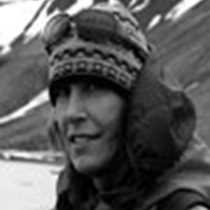Frederick Sound & Port Houghton/Sandborn Canal
Fall is coming. The devil’s club, skunk cabbage, and false lily-of-the-valley are yellowing, and storms are blowing in from the Gulf of Alaska. Today, we rode into the teeth of a squall, but even driving rain and choppy seas couldn’t keep us off the deck. How could it, when whales were feeding?
This morning, at the intersection of Frederick Sound and Stephens Passage, twenty-five or more humpback whales were working along a distinct line in the water. The blows rose and were knocked down, flukes hung in the grey air. The concentration of animals and activity was intense.
These whales, like most in Frederick Sound, were feeding on krill, a small, shrimp-like animal that thickens the waters here. Blustery and stormy as it was, what an incredible concentration of animals! We could only guess what was going on beneath the surface, but when one whale left a large red cloud of scat on the water’s surface, our krill-suspicions seemed confirmed. Berit, one of our naturalists, took a plankton tow. While she did not find any krill, she found an abundance of phytoplankton and copepods, organisms just small steps down the food chain from krill.
After a few hours in the teeth of the wind, we ducked into Sandborn Canal, a small arm of Port Houghton that no one aboard the Sea Bird, not captain, expedition leader, natural history staff, or guest, had before explored.
Pushing through the dense understory, we found and followed trails made by river otter, moose, and bear through this complex, primary forest. Some of us scrambled over windfall, falling into soft mosses and rich humus, while other explored the jagged shores by kayak or Zodiac. No matter the means, what a joy to get out and experience it first hand!
When we came together in the evening, all of us had stories to share about our adventures. Seals hauled out on rocks, crab shells on a log yards from any beach, unique fungi, and the pleasure of listening to wind wash through tall trees—our day was rich with the life of Southeast Alaska, both at sea an in the forest. Who knows what new discoveries and observations tomorrow will bring?
Fall is coming. The devil’s club, skunk cabbage, and false lily-of-the-valley are yellowing, and storms are blowing in from the Gulf of Alaska. Today, we rode into the teeth of a squall, but even driving rain and choppy seas couldn’t keep us off the deck. How could it, when whales were feeding?
This morning, at the intersection of Frederick Sound and Stephens Passage, twenty-five or more humpback whales were working along a distinct line in the water. The blows rose and were knocked down, flukes hung in the grey air. The concentration of animals and activity was intense.
These whales, like most in Frederick Sound, were feeding on krill, a small, shrimp-like animal that thickens the waters here. Blustery and stormy as it was, what an incredible concentration of animals! We could only guess what was going on beneath the surface, but when one whale left a large red cloud of scat on the water’s surface, our krill-suspicions seemed confirmed. Berit, one of our naturalists, took a plankton tow. While she did not find any krill, she found an abundance of phytoplankton and copepods, organisms just small steps down the food chain from krill.
After a few hours in the teeth of the wind, we ducked into Sandborn Canal, a small arm of Port Houghton that no one aboard the Sea Bird, not captain, expedition leader, natural history staff, or guest, had before explored.
Pushing through the dense understory, we found and followed trails made by river otter, moose, and bear through this complex, primary forest. Some of us scrambled over windfall, falling into soft mosses and rich humus, while other explored the jagged shores by kayak or Zodiac. No matter the means, what a joy to get out and experience it first hand!
When we came together in the evening, all of us had stories to share about our adventures. Seals hauled out on rocks, crab shells on a log yards from any beach, unique fungi, and the pleasure of listening to wind wash through tall trees—our day was rich with the life of Southeast Alaska, both at sea an in the forest. Who knows what new discoveries and observations tomorrow will bring?




